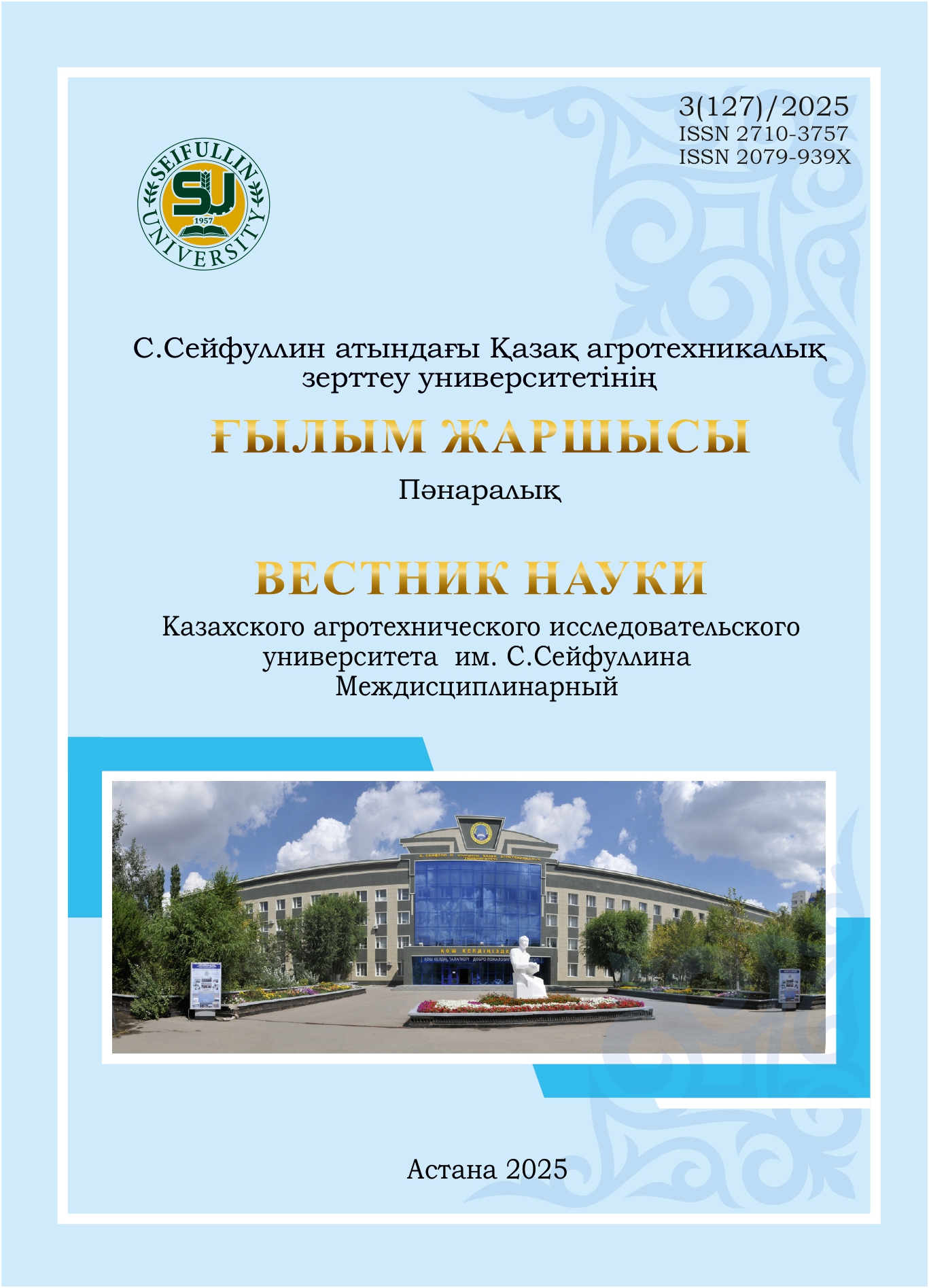Evaluation of the effect of stocking density on survival and growth rate of freshwater Rosenberg shrimp (Macrobrachium rosenbergii)
DOI:
https://doi.org/10.51452/kazatu.2025.3(127).2007Keywords:
Rosenberg shrimp; recirculating aquaculture system (RAS); stocking density; survival; growth rate.Abstract
Background and Aim. The cultivation of freshwater Rosenberg shrimp (Macrobrachium rosenbergii De Man, 1879) is gaining momentum worldwide, including the CIS countries. This species possesses a high growth rate and superior taste and nutritional qualities. Currently, most shrimp are grown in ponds in regions with a long growing season or in tropical countries. However, growing shrimp in regions with a temperate climate does not allow obtaining sufficient marketable products per season. Cultivating commercially promising arthropods in a closed recirculating aquaculture system (RAS) can be a solution for regions with a short average annual temperature season, since in this system it is possible to regulate all technological processes and external conditions of the habitat. Determining the stocking density in this case is important for the effective management of aquaculture.
Materials and methods. The Rosenberg shrimp were cultured in a recirculating aquaculture system (RAS) at the S. Seifullin Kazakh Agrotechnical Research University. The system consisted of 8 fishbreeding tanks of 2000 L each, three of which were used to grow the arthropods. Specialized equipment (a thermo-oximeter and a pH-meter) and drip tests for nitrites and nitrates were used to control the water quality. Generally accepted aquaculture methods were used to determine survival and growth rates, study growth dynamics, and calculate weight gain rates.
Results. The growth rate of Rosenberg shrimp was studied during the experiment. Under the same cultivation conditions and hydrochemical regime, the weight gain in the group with the lowest stocking density was significantly higher than in the other two groups. With relatively similar initial weights, the absolute gain during the experiment in the lowest density group was 44% greater than in the 3rd group and 26% greater than in the 2nd group. The relative gain in the first group was 45% greater than in the third group and 22% greater than in the second.
Conclusion. The highest survival rate was in the first group – 94%. In the second and third groups, this figure was 86% and 82%, respectively. This indicates more favorable growing conditions at a relatively lower stocking density. However, it is also necessary to take into account that low planting densities can lead to a decrease in farm productivity, and this figure should be adjusted by taking into account relative and absolute increases.

